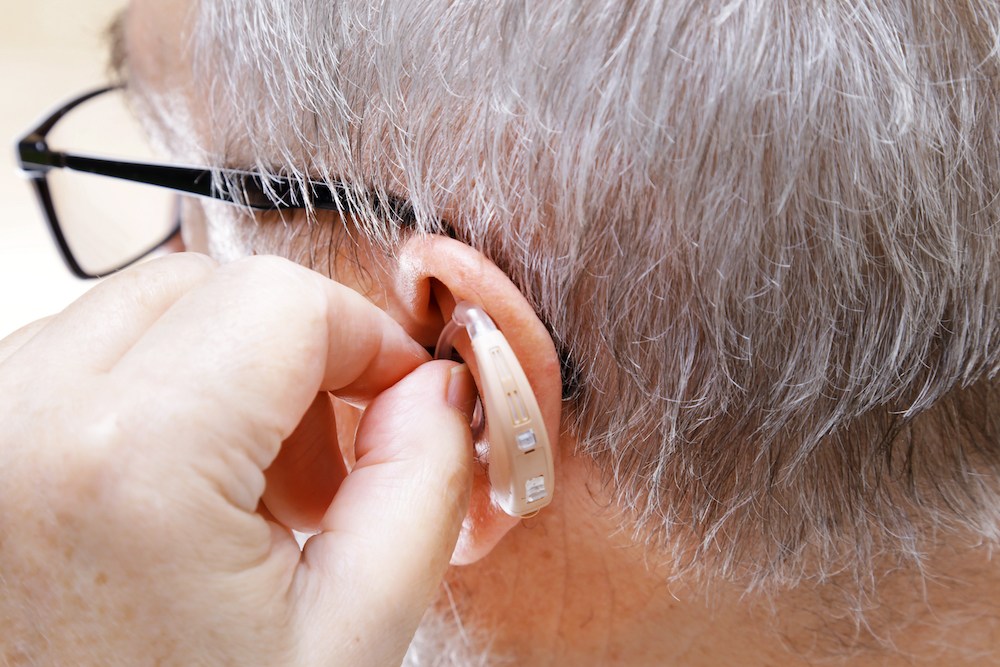How to Choose the Best Hearing Aid for Your Lifestyle
Choosing the right hearing aid isn’t just about finding something

By: admin | February 18, 2025
Hearing loss can make understanding speech difficult. You may notice that certain sounds, like s and f, start to blend, background noise becomes distracting or speech sounds unclear. However, modern technology offers solutions, like hearing aids, that can help improve speech clarity. These devices don’t just make sounds louder; they are designed to enhance the quality of speech, making conversations easier to follow. By helping you maintain social connections and communicate more effectively, hearing aids are important for overall well-being.
Processing speech involves different parts of the auditory system and brain working together. When someone speaks, sound waves travel through the air and enter the ear, where they are converted into electrical signals. This process starts in the cochlea, a part of the inner ear that contains tiny hair cells. These cells respond to different sound frequencies and send signals through the auditory nerve to the brain, where they are processed and interpreted.
Once the signals reach the brain, they are sent to the auditory cortex, which helps recognize speech patterns and individual words. Other areas of the brain, including those responsible for memory and language, work together to understand the meaning of what is being said. This coordination allows people to process speech quickly and respond in conversations.
Understanding speech also depends on more than just sound. The brain uses visual cues, past experiences, and knowledge of language to interpret what is heard. This is why facial expressions and lip movements can make speech easier to follow, especially in noisy environments. By combining sound and context, the brain helps people understand speech even when listening conditions are not ideal.
Clear speech is essential for effective communication because it allows people to understand and respond accurately in conversations. When speech is clear, words and sounds are more distinct, reducing the chances of misinterpretation. This is especially important for individuals with hearing loss, as unclear or mumbled speech can make it much harder to follow conversations. Clarity in speech also helps in noisy environments where background sounds might otherwise interfere with understanding. Whether in a workplace meeting, a classroom or a casual conversation, clear speech ensures that messages are conveyed accurately and efficiently.
Beyond everyday interactions, clear speech plays a crucial role in building strong personal and professional relationships. Miscommunication can lead to frustration, confusion and misunderstandings, which can impact connections with others. In social settings, it helps people engage more fully and feel included in conversations. For individuals with hearing difficulties, speech clarity can make the difference between feeling connected or isolated. Prioritizing clear speech benefits everyone, creating more inclusive and effective communication in all aspects of life.
Hearing aids can improve speech by making sounds clearer and easier to understand. When someone has hearing loss, certain speech sounds, like soft consonants, can become difficult to hear. This can make words blend together or seem muffled. Hearing aids help by amplifying these sounds, making speech more distinct. Many modern hearing aids also reduce background noise, so voices stand out more clearly in busy environments. This allows people to follow conversations more easily, whether they are in a quiet room or a crowded restaurant.
In addition to making speech louder, hearing aids are designed to enhance speech clarity. Advanced technology inside the devices processes sound to emphasize voices while minimizing unnecessary noise. Some hearing aids even adjust automatically based on the listening environment, helping users hear speech more naturally. By improving the way speech is heard and understood, hearing aids can make communication less stressful and more enjoyable, allowing people to stay engaged in conversations with confidence.
Different hearing aid styles can impact how well you hear and understand speech. Behind-the-ear (BTE) models are often equipped with directional microphones and noise reduction technology, helping to focus on voices while minimizing background noise. In-the-ear (ITE) styles sit inside the ear and use its natural shape to direct sound more effectively.
Finding the right hearing aid depends on your specific hearing needs and daily routine. If you often struggle to hear conversations in loud environments, a device with strong speech-enhancing features may be the best choice. For those who prioritize comfort and a discreet design, a smaller model may work better. An audiologist can help determine which style suits you best, ensuring that speech remains clear and communication feels more natural.
Hearing aids have evolved significantly over the years. Today, they are high-tech devices that not only amplify sound but also offer a range of features designed to improve your overall hearing experience. For instance, many modern hearing aids now come equipped with digital noise reduction technology. This feature works by identifying and reducing background noise, helping you focus on the conversation at hand without being distracted by other sounds in your environment.
Additionally, some hearing aids offer connectivity options that allow you to stream audio directly from your smartphone or TV to your device. This means you can enjoy music, phone calls and TV shows with improved clarity and without disturbing others around you. These advancements in technology make hearing aids more than just sound amplifiers; they are comprehensive tools designed to enhance your quality of life.
However, while these features can greatly improve your listening experience, it’s important to consult with an audiologist who can guide you in choosing the right device for your specific needs. Every person’s hearing loss and unique and finding the right solution requires personalized care and attention.
Adjusting your hearing aids to improve speech clarity involves more than just turning up the volume. Every person’s hearing is different, and finding the right settings for your hearing aids can make a big difference in how well you understand speech. Most hearing aids come with features that can be customized based on your hearing needs. These features might include adjustments for pitch, volume, and noise reduction, allowing you to focus on important sounds, like speech, while reducing distracting background noise.
One important adjustment to consider is the microphone settings. Many modern hearing aids have directional microphones that focus on sounds in front of you, like a conversation. This can be especially helpful in noisy environments like restaurants or crowded areas. By adjusting these settings, you can prioritize speech from the person you’re talking to, making it clearer and easier to understand, even with background noise around you.
Another key adjustment is the noise reduction feature. Hearing aids can filter out constant background sounds which can help you focus better on speech. This can be particularly useful in settings where there’s a lot of ambient noise. It’s important to work with your audiologist to fine-tune this feature so that it doesn’t block out too much of the environment, which might make you miss other important sounds, like someone calling your name or a doorbell ringing.
Finally, it’s important to regularly reassess your hearing aid settings as your hearing needs change over time. What works well today may not be as effective in the future, especially as your hearing may change. Regular check-ups with an audiologist ensure that your hearing aids are adjusted to suit your current needs. They can help you make the necessary changes to ensure that your hearing aids are always working to enhance speech clarity and overall hearing comfort. They will use their expertise along with feedback from you about your listening experiences in different situations, to make precise adjustments to your device. This collaboration ensures that your hearing aid is optimized for optimal speech clarity – making conversations clearer, easier and more enjoyable!
Keeping your hearing aids in good condition is essential for clear speech and effective communication. Dirt, earwax and moisture can build up over time, affecting how well your hearing aids pick up and process sound. Regularly cleaning your devices with a soft, dry cloth and using a wax guard can help prevent blockages that might distort speech. Storing them in a dry, protective case when not in use also helps keep them working properly.
Battery life and performance also play a role in maintaining speech clarity. Weak or dying batteries can cause hearing aids to cut out, produce distorted sound or reduce speech enhancement features. Replacing batteries as needed or ensuring rechargeable models are fully charged helps maintain consistent performance. If you notice a sudden drop in clarity, checking the battery should be one of the first troubleshooting steps.
Routine professional maintenance can also make a difference. Audiologists can inspect your hearing aids for any internal damage, adjust settings for better speech understanding and provide deep cleaning services. Scheduling regular check-ups ensures your devices are working at their best, allowing you to hear speech clearly and communicate with confidence in different listening environments.
Despite the many benefits and advancements of hearing aids, there may come a time when you need to seek guidance from an audiologist. This can be for various reasons. Perhaps you’ve noticed that your hearing aid isn’t performing as well as it used to, or maybe you’re experiencing some difficulties in certain listening situations even with your device on. You might also have questions about new features or technologies that could further enhance your hearing experience.
Whatever the reason may be, don’t hesitate to reach out to a professional hearing clinic. Audiologists are there to help you through any challenges and ensure that your device is tailored perfectly to meet your unique needs. They can assess your current situation, provide valuable advice and make necessary adjustments to optimize the performance of your device.
Hearing loss is personal and unique to each individual – what works for one person might not work for another. So, it’s important that you communicate openly with your audiologist about any concerns or issues you’re facing.
There are several ways hearing aids can improve speech clarity and overall hearing. While it may take time to find the right approach, it can have a significant impact on your daily life. Keep in mind that everyone’s hearing needs are different, and what works for one person may not work for another. It’s important to work with an audiologist who can help you make the best choices for your specific needs.
If you’re ready to take that next step towards better communication and connection, at Baker Audiology & Hearing Aids, we are here to help! Our team in Sioux Falls, SD is here to help answer any questions or concerns you might have about improving your speech clarity with hearing aids. Just give us a call at (605) 610-3466 – we’d love to hear from you!
Tags: benefits of hearing aids, hearing aid repair, hearing aid styles

Choosing the right hearing aid isn’t just about finding something
By: admin | October 20, 2025

Hearing aids have quietly become some of the most advanced pieces of
By: admin | July 29, 2025

If you enjoy hiking, playing tennis, working in your garden or
By: admin | June 20, 2025
